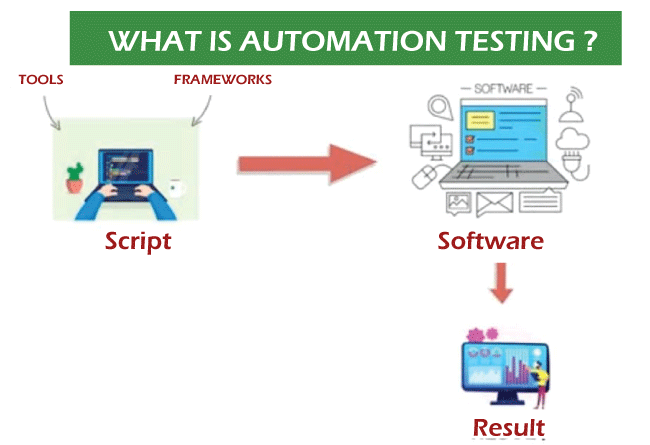Automation Testing: Secret Tips to Streamline Growth Lifecycles
Automation Testing: Secret Tips to Streamline Growth Lifecycles
Blog Article
Guaranteeing Success in Automation Examining: Key Metrics, Obstacles, and Solutions Every QA Team Must Know
In the world of software program top quality assurance, the landscape of automation screening is ever-evolving, requiring a precise technique to make certain smooth procedures. The trip to understanding automation screening is paved with nuances that require a keen eye for tracking, evaluation, and continual improvement. As the industry moves ahead, the mission for optimum efficiency in automation testing stays a continuous pursuit, advising QA teams to outfit themselves with the expertise and strategies necessary for victory.
Relevance of Secret Metrics
Understanding the significance of essential metrics is necessary for reviewing the efficiency and performance of automation testing procedures. Secret metrics work as measurable procedures that provide useful insights into numerous aspects of the screening process, such as examination insurance coverage, test execution time, issue density, and test case efficiency. By assessing these metrics, QA teams can determine traffic jams, inefficiencies, and locations for renovation within their automation screening framework.
One essential aspect of crucial metrics is their ability to track progression and check the overall health of the screening process (automation testing). They make it possible for stakeholders to make informed decisions based upon data-driven insights, which can cause extra efficient screening methods and better resource allotment. In addition, essential metrics can help groups set practical objectives, measure the success of automation efforts, and show the ROI of automation testing initiatives

Common Difficulties Encountered
Obstacles commonly encountered in automation testing procedures can significantly affect the general efficiency and effectiveness of QA groups. One of the significant challenges is the selection of the right test situations for automation. Not all examination cases appropriate for automation, and selecting the incorrect ones can lead to lost time and sources. In addition, maintaining examination manuscripts can be a complicated job, specifically as the application undertakes regular modifications. Test script maintenance requires constant updates and modifications to ensure they show the current capability properly. One more usual obstacle is the initial investment required for establishing automation structures and devices. This can be a barrier for some organizations, especially smaller sized ones with minimal budget plans. Automation screening might not cover all facets of testing, such as use and user experience screening, which still call for hands-on treatment. Conquering these difficulties calls for appropriate planning, tactical test instance option, robust maintenance processes, adequate resources, and a clear understanding of the limitations of automation screening.
Effective Solutions for Obstacles
To resolve the obstacles run into in automation screening, executing effective solutions is crucial for improving the effectiveness and productivity of QA groups. One key remedy is to purchase durable training programs for QA groups to guarantee they have the necessary skills to properly use automation tools. Training can connect expertise gaps, boost understanding of automation frameworks, and enhance scripting capabilities, inevitably leading to much more efficient examination production and implementation.
Another vital option is to establish clear interaction networks within the QA team and with various other stakeholders, such as developers and task managers. Effective communication assists in straightening assumptions, sharing progression updates, and quickly resolving issues or barricades that might arise throughout the automation screening procedure.

Monitoring and Evaluation Methods
Carrying out reliable tracking and evaluation strategies is vital for making sure the success and performance of their explanation automation screening procedures. By making use of surveillance tools, QA groups can track the efficiency of test manuscripts, determine bottlenecks, and pinpoint areas for enhancement. Real-time surveillance permits fast discovery of problems, allowing fast response and resolution. In addition, assessing test outcomes and metrics provides valuable insights into the quality of the software program being evaluated and the effectiveness of the screening strategy.
One key technique in surveillance and evaluation is the use of dashboards that combine pertinent metrics and KPIs in a visually easily accessible format. These important site control panels supply a comprehensive overview of test implementation standing, test protection, problem patterns, and various other vital details. Regularly assessing and examining these dashboards can assist QA groups make educated choices, prioritize tasks, and optimize screening efforts.
Additionally, executing automated informs and notices based on predefined thresholds can boost proactive monitoring and prompt treatment. By setting up informs for efficiency inconsistencies or test failings, groups can address issues promptly and stop them from rising. In general, monitoring and evaluation techniques play an important function in making certain the effectiveness and success of automation testing campaigns.
Continual Renovation Strategies
Enhancing the effectiveness of automation screening processes requires the constant improvement of techniques and methodologies. One key technique to boosting automation testing processes is to conduct normal reviews and retrospectives.
Verdict
Finally, it is essential for QA teams to understand the essential metrics, difficulties, and services in automation testing to ensure success. By carefully monitoring and analyzing information, carrying out efficient services to typical obstacles, and constantly improving strategies, QA teams can optimize their testing procedures and deliver top notch software. Adhering to these practices will inevitably lead to extra efficient and efficient automation testing methods.
By evaluating these metrics, QA teams can identify traffic jams, ineffectiveness, and areas for improvement within their automation screening structure.
Furthermore, key metrics can assist teams established sensible goals, gauge the success of automation efforts, and show the ROI of automation screening initiatives.
Difficulties frequently experienced in automation testing procedures can significantly impact the general efficiency and effectiveness of QA teams. Automation testing may not cover all facets of testing, such as use and user experience screening, which still need hands-on intervention.In verdict, it is critical for QA teams to recognize the vital metrics, obstacles, and solutions in automation screening to make sure success.
Report this page